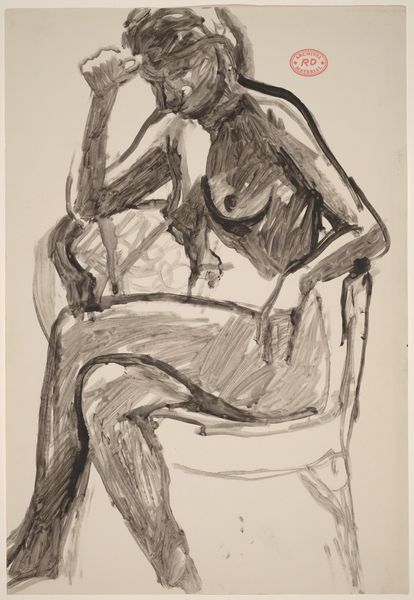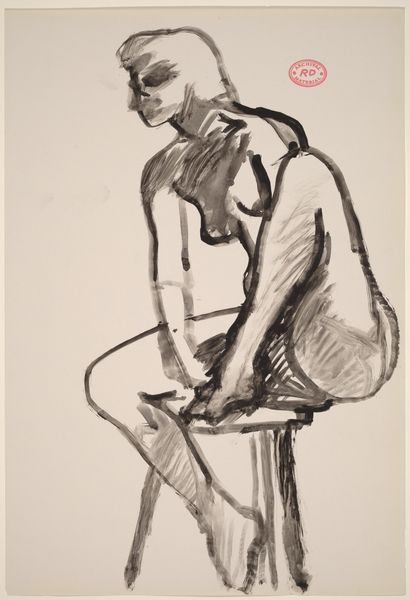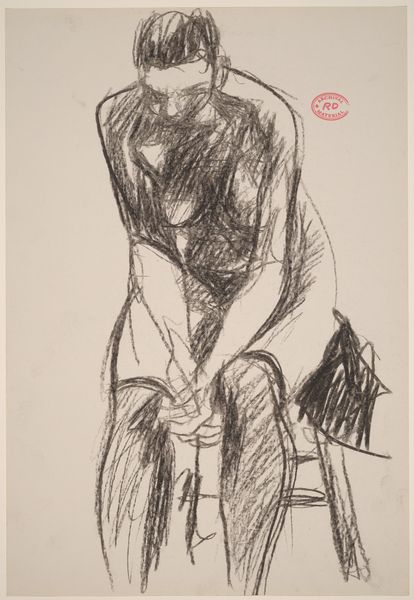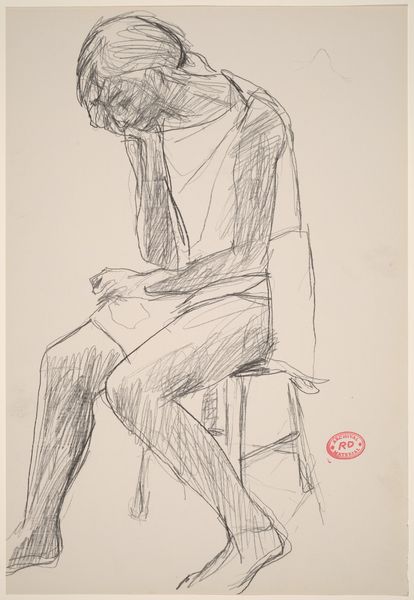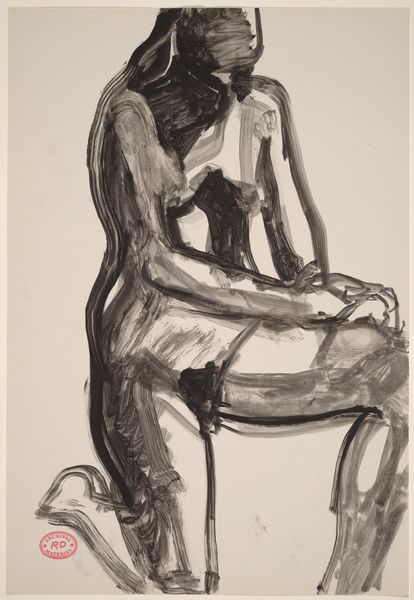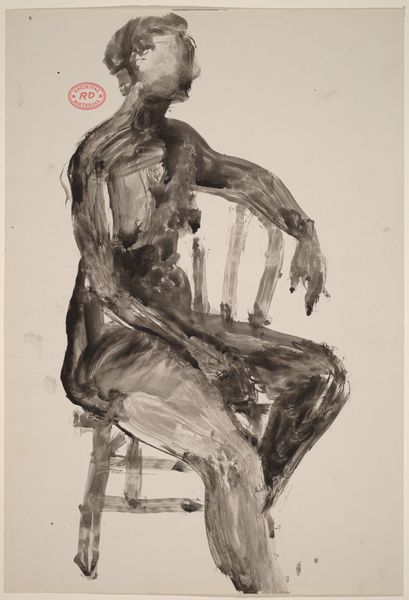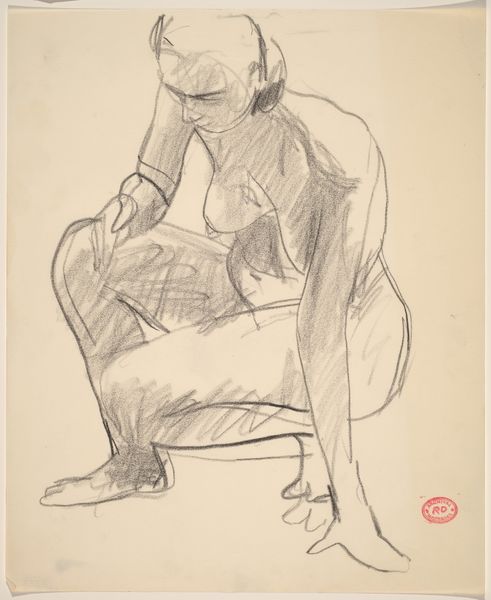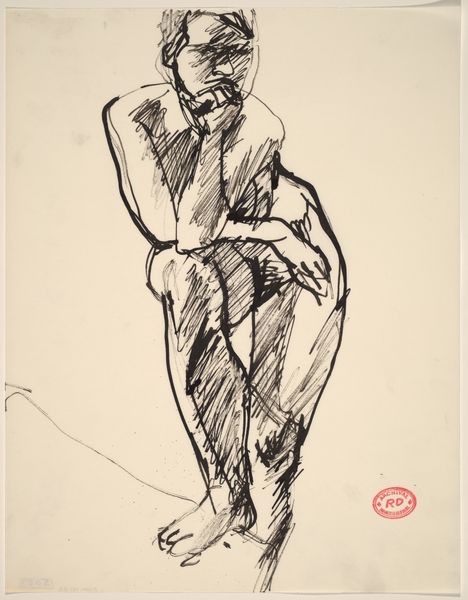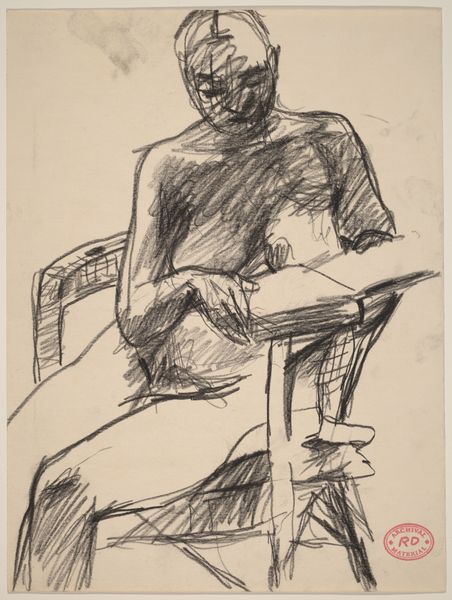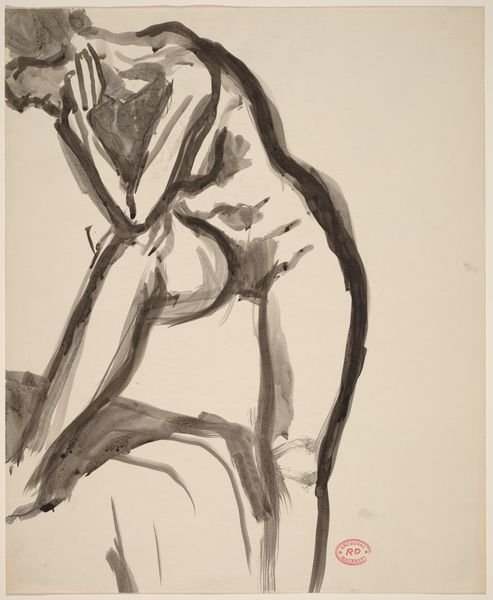![Untitled [seated woman with hands on knees] by Richard Diebenkorn](/_next/image?url=https%3A%2F%2Fd2w8kbdekdi1gv.cloudfront.net%2FeyJidWNrZXQiOiAiYXJ0ZXJhLWltYWdlcy1idWNrZXQiLCAia2V5IjogImFydHdvcmtzLzAzODhiYWU2LTFiOTktNDUyOC1iOWExLWRmMjk3MTgxOWI2My8wMzg4YmFlNi0xYjk5LTQ1MjgtYjlhMS1kZjI5NzE4MTliNjNfZnVsbC5qcGciLCAiZWRpdHMiOiB7InJlc2l6ZSI6IHsid2lkdGgiOiAxOTIwLCAiaGVpZ2h0IjogMTkyMCwgImZpdCI6ICJpbnNpZGUifX19&w=3840&q=75)
drawing, ink
#
portrait
#
drawing
#
figuration
#
bay-area-figurative-movement
#
ink
#
portrait drawing
Dimensions: overall: 40.6 x 30.2 cm (16 x 11 7/8 in.)
Copyright: National Gallery of Art: CC0 1.0
Editor: This is an ink drawing by Richard Diebenkorn, from sometime between 1955 and 1967. It's called "Untitled [seated woman with hands on knees]". The figure seems so vulnerable, almost unfinished, what do you make of this portrait? Curator: Vulnerability is key. Diebenkorn created this during a period of immense social upheaval in America. What does it mean to portray a woman in such a raw, unidealized state against this backdrop? Think about the limited representation of women artists in the mid-20th century too, and what a portrait *by* a woman artist might reveal in comparison. Editor: That's a great point. I was initially focused on the sketchiness, but viewing it through that lens makes me think about the politics of representation and visibility. Does her seeming incompleteness represent the ways women's stories have historically been suppressed or erased? Curator: Precisely. And consider the male gaze often prevalent in art history. How does it affect the viewer’s perception? Are we positioned as observers of her vulnerability, or does the artist encourage us to empathize? The open-ended quality prompts reflection on identity. What does it mean that this woman's features are mostly obscured? Editor: So, it’s less about a specific person and more about a broader experience? A comment about being a woman during this period, about representation in general, perhaps? Curator: Yes. Consider how abstraction serves not to obfuscate but to create space for broader interpretations, moving away from traditional notions of portraiture that were about capturing likeness and towards the socio-political representation of a gender. Editor: That definitely changes my perspective. I initially saw it as just a sketch, but now I see the power in its ambiguity. Curator: Right. It is a powerful reflection of not only female representation, but also, the position and the voice of women in art as well as within a society. Editor: This has been really enlightening! I am now eager to do more research on representations of women!
Comments
No comments
Be the first to comment and join the conversation on the ultimate creative platform.

